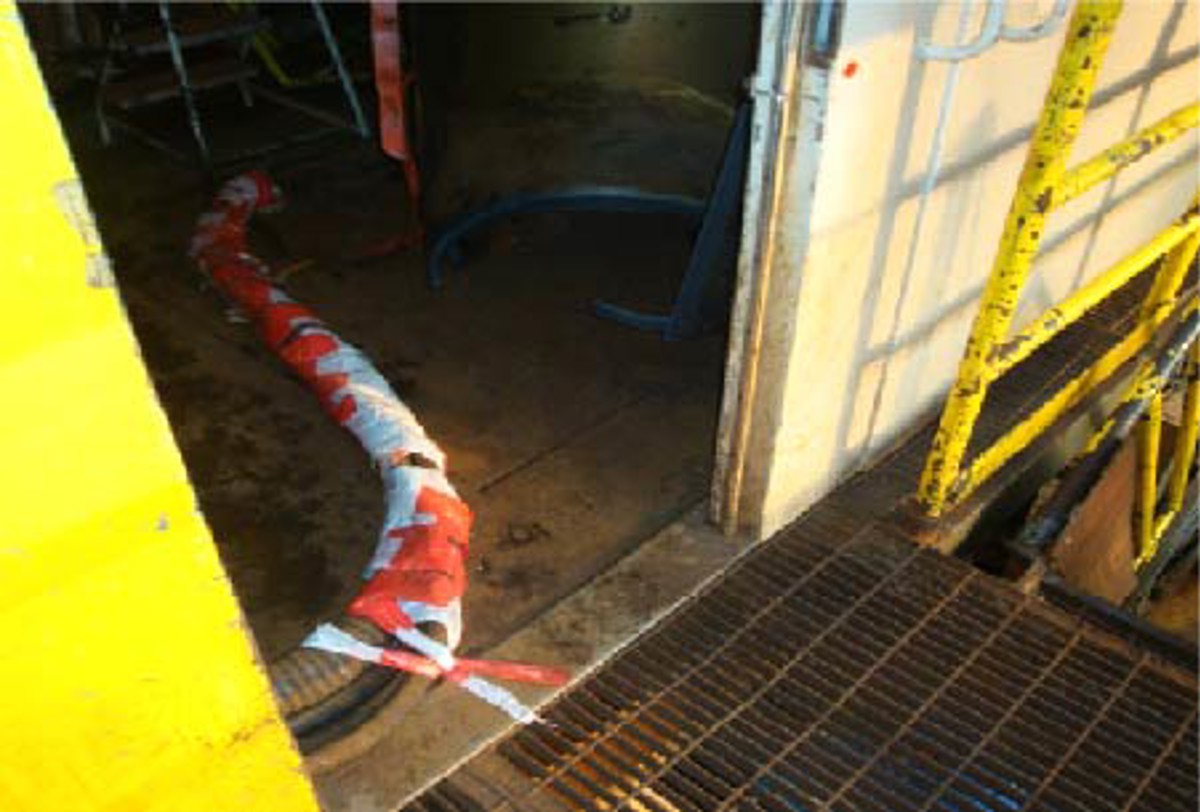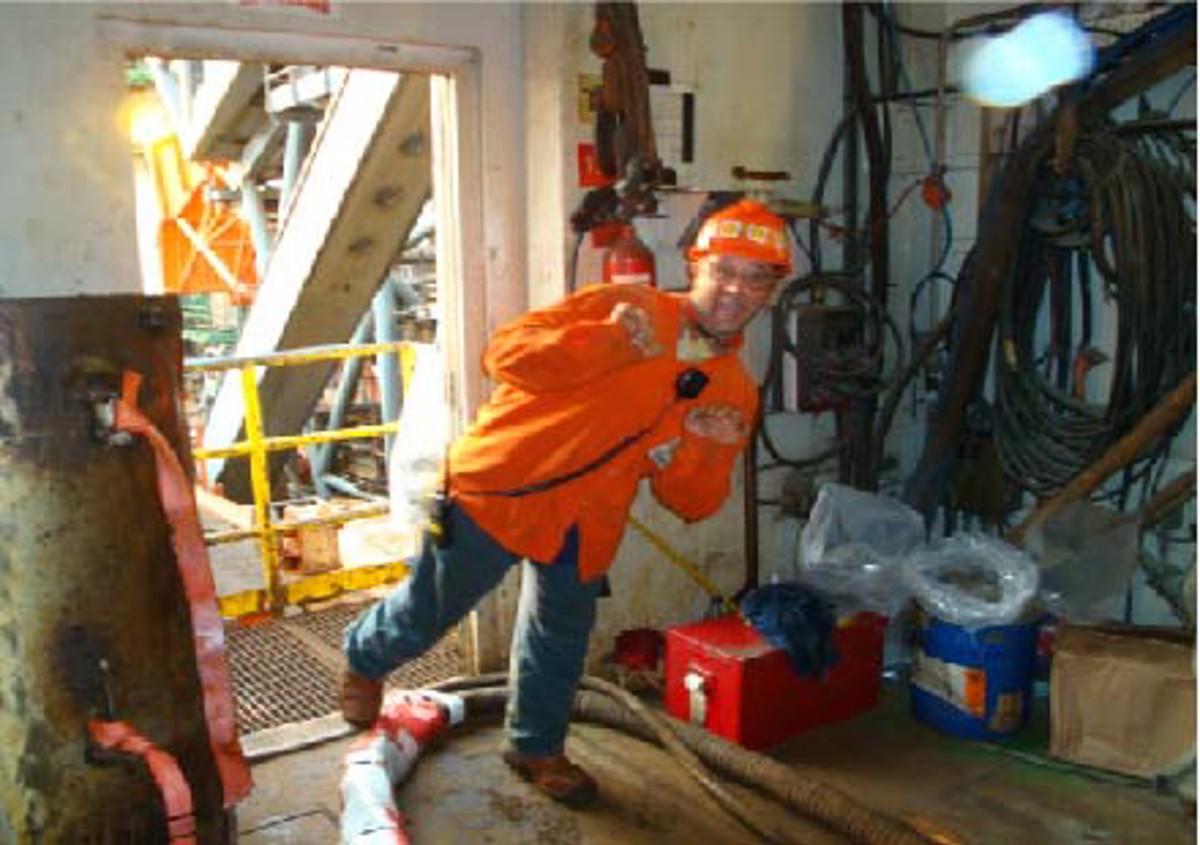Hand injury caused when worker tripped over hazard
- Safety Flash
- Published on 2 April 2009
- Generated on 18 December 2025
- IMCA SF 04/09
- 2 minute read
Jump to:
A worker was injured after falling over a bundle of hose and electrical cables which he had to walk over in order to reach his working area.
What happened?
As the worker stepped over this trip hazard, he was alerted by his supervisor to a further hazard from an open hatch and told to approach his working area by a safer route. The worker turned around and, as he did so, stepped on to the hose and electrical cable and subsequently slipped and fell. In the attempt to break his fall with both arms stretched out, he sustained an injury to his left hand.
The worker received first aid on site and through subsequent X-rays it was discovered that his hand was fractured.

trip hazard

worker tripping over hazard (re-enactment)
What were the causes?
The following immediate causes were identified:
- unsafe working environment
- complacency
- unsafe body position
- inadequate planning (equipment placed so as to leave trip hazard across thoroughfare).
It was noted that putting up signs and making hazards more visible is no guarantee for preventing accidents. Personal awareness of all hazards in the work place is absolutely required. In this instance it was not practical to remove the trip hazard and crew members were advised that extreme caution was required and that, where possible, they should minimise movement through the area.
IMCA Safety Flashes summarise key safety matters and incidents, allowing lessons to be more easily learnt for the benefit of the entire offshore industry.
The effectiveness of the IMCA Safety Flash system depends on the industry sharing information and so avoiding repeat incidents. Incidents are classified according to IOGP's Life Saving Rules.
All information is anonymised or sanitised, as appropriate, and warnings for graphic content included where possible.
IMCA makes every effort to ensure both the accuracy and reliability of the information shared, but is not be liable for any guidance and/or recommendation and/or statement herein contained.
The information contained in this document does not fulfil or replace any individual's or Member's legal, regulatory or other duties or obligations in respect of their operations. Individuals and Members remain solely responsible for the safe, lawful and proper conduct of their operations.
Share your safety incidents with IMCA online. Sign-up to receive Safety Flashes straight to your email.